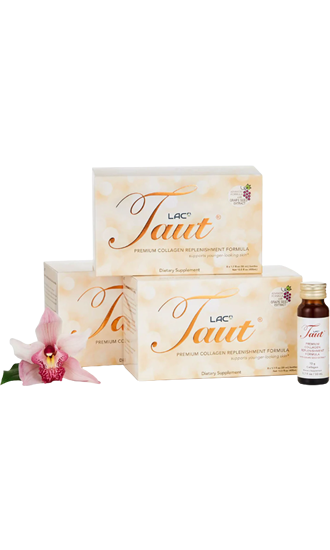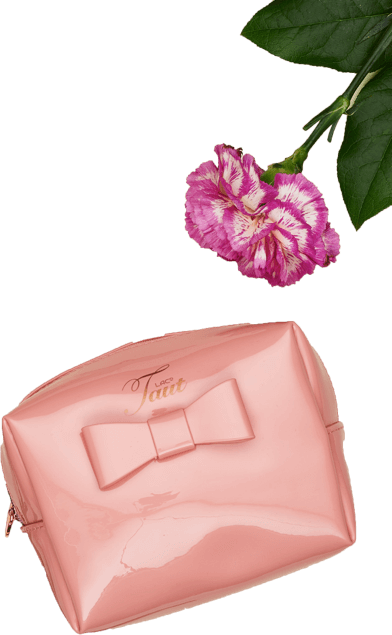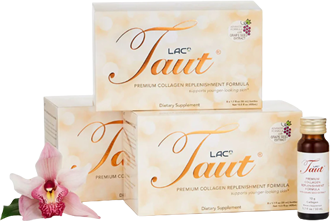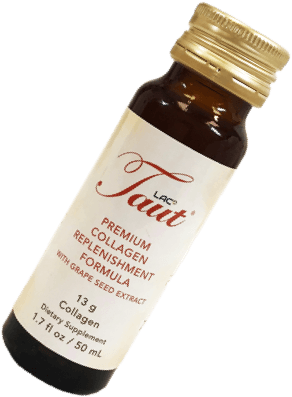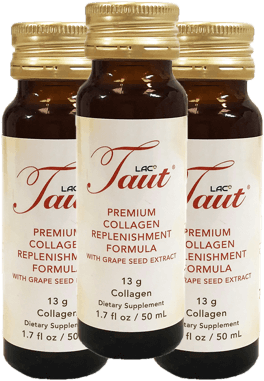What Ingredients Should Not Be Mixed With Skincare (Retinol, Moisturizer, Vitamin C, & Others)

Developing a healthy skincare routine is key to avoiding blemishes, sun spots, and other signs of aging.
As a part of this important beauty routine, many choose to layer different types of skin products, which works well in specific instances.
But, is it best?
It can be.
By layering different products, you’re gently pushing down different nutrients so your skin can absorb them faster than applying them in single applications.
While this makes sense in certain situations, the problem is that each cosmetic product you purchase is designed and tested on its own.
So, in many cases, the active chemicals found in one product can counter the effect of another product - or, even worse, they can have a compound reaction that causes skin irritation or other issues.
Because new anti-aging and skincare solutions are developed every day, you may need to work with a board-certified dermatologist or take time to learn about the new ingredients in cosmetic products to find out how they interact with each other and whether or not two skin care products are compatible.
But, having a basic understanding of what ingredients should not be mixed with your skincare layering process can help save you a lot effort and potential skin problems.
There's a lot to examine with the growing variety of creams, ointments, and chemical treatments to treat skin, so let's get started.
Is It Safe to Mix Skincare Products?
Here are some common questions we get regarding which skin care products you should or shouldn't mix together.
- Can I use vitamin C and hyaluronic acid together?
- Can you put moisturizer over retinol?
- Can you use hyaluronic acid and glycolic acid together?
- Can you use BHA and AHA together?
- Can niacinamide be used with retinol?
- What can you not mix with niacinamide?
As far as skin products are concerned, the general answer to these questions is, "yes."
However, it's not that simple.
There are certain skincare products that are compatible and, as long as you follow common layering guidelines, can safely be applied one after the other.
But, cosmetic products can contain different types of compounds and hundreds of chemicals.
Therefore, you need to familiarize yourself with the most common types as well as the different names they can appear under if you want to combine skincare solutions safely.
More helpful reading: What are ceramides?
Ingredients You Should Avoid Mixing with Skincare
Some chemicals may have a similar effect, but their contents can be completely different. So, instead of assuming that all chemical peels are identical, we need to evaluate each option’s ingredients.
Below, we’ve put together a list of common ingredients you should never mix in your skin care routine.
AHAs/BHAs and C Vitamins
Vitamin C is a common ingredient in skin serums.
This nutrient is essential for the production of healthy skin and it can help support healthy cell turnover. Taking or applying C vitamins is a great way to bolster your skin care routine - unless you’re combining it with alpha hydroxy acids (AHAs) or beta hydroxy acids (BHAs).
AHAs and BHAs are fundamentally different, but they are commonly used in chemical skin exfoliation formulas. The reason is that both of these are acidic enough to remove dead cells, and in some concentrations, they can even remove the thin external surface of the skin to trigger the body’s healing response.
While both of these sound amazing individually, you should never mix BHA/AHA and vitamin C-based skin products. The reason why is that the efficacy of the vitamin C depends heavily on the solution’s pH. Since AHAs and BHAs are acidic, they may destabilize the vitamin C’s pH and render it useless.
AHAs/BHAs and A Vitamins
Retinol, a type of vitamin A, is known for its powerful anti-aging properties and it’s a common ingredient in lotions, serums, and other skin products. Also known as retinoid, this type of vitamin A can help accelerate cell turnover and significantly reduce the appearance of wrinkles as well as other signs of aging.
It may seem like combining A vitamins and acids like AHAs or BHAs can yield amazing results. After all, these acidic solutions can remove dead cells, so the accelerated growth of cells caused by vitamin A should like a match made in heaven.
However, A vitamins also work by removing the outermost layer of the skin, so you may end up with skin irritation if you use both of these together.
Over using chemical exfoliants can cause severe skin damage and result in redness, irritation, and oozing wounds in the worst cases, so you should avoid combining these at all costs.
More helpful reading: What does vitamin A do for your skin?
Benzoyl Peroxide and Retinol
Benzoyl peroxide is a harsh chemical that’s used to exfoliate the skin, which can result in a lighter and more even complexion.
This compound is found in a huge variety of products and it’s one of the star players in the acne treatment industry, but you need to follow the manufacturer’s instructions in order to use it safely.
Retinol is also among the most popular solutions for acne and oily skin, so you may be tempted to combine it with benzoyl peroxide to see if they work well together.
Similar to the first example we covered, mixing A vitamins with benzoyl peroxide may actually have a negative effect on the skin.
Both of these are harsh compounds that remove dead skin cells, but applying them at the same time may damage the external layer that protects the rest of our dermis and cause severe irritation.
Instead, you can avoid benzoyl peroxide altogether and pair your retinoids with hydration formulas.
Just a note, we often hear the question,"do I put retinol on before or after moisturizer?" You'll want to put retinol on after you put moisturizer on.
C Vitamins and Retinol
Although it’s found in a variety of products, vitamin C is difficult to use in cosmetic formulas.
The reason is that C vitamins only remain an active ingredient when they are in an acidic state (maintains a low pH).
If this measurement is not right, C vitamins become inactive which makes it so that your body won’t use them for skin production.
A vitamins work best in alkaline formulas, in other words, cosmetic products that have a pH reading on the higher end of the scale.
Like other vitamins, retinol is only effective as long as the pH reading remains close to the ideal pH level.
When A and C vitamins are combined these two skincare ingredients affect each other’s pH, so you run the risk of rendering them both useless.
More helpful reading: Coconut oil for skin
Vitamin C and Niacinamide
In addition to supporting the production of new skin cells, C vitamins also have antioxidant properties.
This means that they help breakdown free radicals - molecules that affect cells and cause premature aging. Antioxidants help eliminate these unwanted molecules and stop them from damaging organs, including your skin.
Niacinamide is also a common antioxidant used in skin serums and similar products. Its most basic benefit is that it protects cells against damage by free radicals, but niacinamide is fundamentally different from C vitamins.
Niacinamide and C vitamins work best under different pH concentrations. C vitamins are acidic, while niacinamide’s ideal readings are closed to neutral, so these two may neutralize each other’s effect.
Additionally, the combination of C vitamins and niacinamide may result in the production of nicotinic acid, which may cause skin redness for short periods of time.
Salicylic Acid and C Vitamins
Can you use vitamin C and salicylic acid together?
We’ve covered the use of BHAs like salicylic acid and C vitamins, but it’s important to make a caveat for this specific combination.
Unlike most other combinations on this list, salicylic acid and C vitamins both operate in similar pH levels, but are not identical.
This has led many people to believe that this combination may work together and provide superficial as well as deep exfoliation.
However, it’s important to note that the difference in ideal pH may still impact how effective this combination may be.
Additionally, these two ingredients may also produce dryness when combined in the same area. Depending on the amount of sun exposure, this can develop into mild peeling and flaking, so you’re better off avoiding this combination all together.
Soap-Based Cleansers and C Vitamins
Soap-based skin cleansers have a high pH that allows them to remove contaminants from your skin.
These cleansers are commonly found in shower gels and similar personal care products and they help prevent bacterial as well as fungal infections. But, because they are alkaline, soap cleaners can also produce an imbalance that affects C vitamins as well as any other acidic ingredient.
The most common scenario is that the products that contain C vitamins are altered by the soap, so your body doesn’t absorb the nutrients sitting on the dermis.
And, because soap-based goods are usually paired with fragrances and other harsh chemicals, they can result in irritation when combined with other ingredients.
More helpful reading:
https://www.renewskinco.com/blogs/i/best-face-wash
BHAs/AHAs and Azelaic Acid
Azelaic acid is becoming a huge buzzword in the world of cosmetics, skincare, and beauty products.
This compound has unique features and is produced naturally by our bodies to help regulate a variety of elements, including tone, the appearance of blemishes, and oil production.
When used on its own, azelaic acid may produce smoother (and even more) skin. For people with bad acne, this solution may not be enough to control breakouts.
In these cases, many people consider mixing this compound with acids like BHAs or AHAs, but this may not have the best results in terms of dermal health.
Depending on the concentration, BHA and AHA products may produce dry skin and mild irritation.
Azelaic acid may also result in thinner dermis and increase the chances of experiencing sensitivity. This may produce discomfort when the skin is exposed to BHA and AHA products, especially for people who already have sensitive skin.
Oil-Based and Water-Based Formulas
Although they can come from a variety of sources, most skin products can be categorized into either oil or water-bases formulas. Cosmetics that feature an oil-based formula are generally thicker and can help keep the skin hydrated.
A few decades ago, oils were only used in the development of certain cosmetics, but recent advancements have allowed it to become a common ingredient in many products.
Water-based cosmetics tend to be thinner and are more suitable for naturally oily skin.
As the name suggests, these products are water-based and are less likely to contain pore-clogging ingredients, so they are considered a lighter alternative than cosmetics made from oil.
But, as the old adage says, oil and water simply don’t mix. When you apply oil-based products, you’re creating a barrier that doesn’t allow for the absorption of cosmetics that use water as a base.
On the other hand, water-based solutions often have chemical preservatives that affect cosmetic goods made from oil.
Tretinoin and Peeling Agents (Benzoyl Peroxide, Salicylic Acid, Etc.)
We’ve already explored the effects of retinol, which falls under the category of A vitamins. However, it’s not the only skin care compound that can be classified in this group.
Tretinoin, is also part of the A vitamins, is a synthetic nutrient that is harsher than retinol, but can also provide more noticeable results.
One of the main differences between other A vitamins and tretinoin is that the later is more concentrated, so it’s harder to administer at the right dose.
If it's not handled properly, tretinoin may cause blistering, crusting, and swelling.
Tretinoin alone doesn’t necessarily pose a problem, but it can cause skin damage if it’s combined with other peeling agents.
Benzoyl peroxide, salicylic acid, and other chemical exfoliants eliminate microscopic debris, but they can also irritate the skin and produce related side-effects.
When combined with these chemical exfoliants, tretinoin increases the chances of developing skin redness and other severe symptoms.
What should you not use with tretinoin?
Peptides and A Vitamins
Peptides are specific types of protein that have a variety of skin health benefits. They can promote the production of collagen and make an ideal addition to your care routine as it works well together with sensitive skin products.
But, can you use peptides and retinol together?
It’s not a great idea to mix peptides with retinol or acids such as AHAs and BHAs.
The reason is that peptides don’t produce the same effects in acidic formulas, so mixing it with A vitamins or an AHA/BHA compound may not produce any benefits in terms of skin health.
Another reason why peptides are not compatible with chemical exfoliants is that these proteins reach the deep layers of the skin, so using retinoids or a similar non-acidic solution can produce discomfort and sensitive skin.
Renew Your Skin With Natural Skincare From The Inside
At Taut Collagen we've spent years developing gentle products that help boost skin health and deliver a fresh dose of collagen to your skin.
A great supplement to help maintain your skin’s appearance without relying on harsh chemicals is Taut’s Premium Collagen Drink Advanced Formula,
The ingredients are all natural and don't contain any chemicals or preservatives. It restores and protects your skin from aging while helping you keep that beautiful, rejuvenated glow.
The magic behind the formula is the high potency - 13,000mg of 100% marine-sourced collagen derived from red snapper fish scales caught from the South Pacific Ocean.
The marine collagen works together with other clinically studied ingredients to provide even better results, including grape seed extract which helps protect the skin from free radicals. It also has hyaluronic acid which hydrates and strengthens the skin and vitamin C which supports the production of collagen in the body.
Marine collagen has collagen peptides that are small enough to be effectively absorbed when ingested, triggering your body's own production of new collagen, which in turn creates radiant skin results. The collagen is broken down into super tiny pieces thanks to a process called hydrolysis. It’s also highly potent.
If you want to learn more about the best products for your skin, contact our team and we’ll be glad to help.


